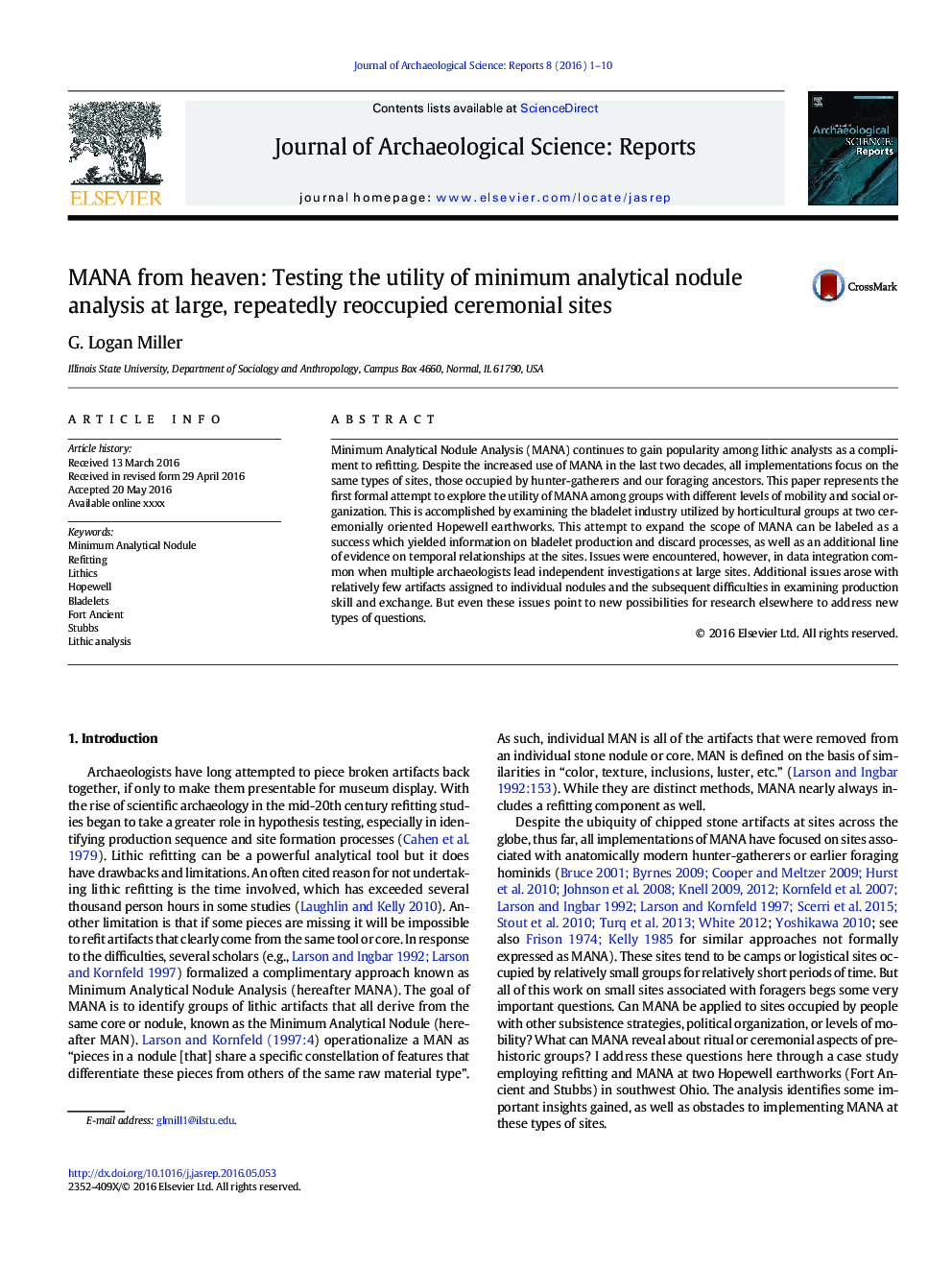| Article ID | Journal | Published Year | Pages | File Type |
|---|---|---|---|---|
| 7445336 | Journal of Archaeological Science: Reports | 2016 | 10 Pages |
Abstract
Minimum Analytical Nodule Analysis (MANA) continues to gain popularity among lithic analysts as a compliment to refitting. Despite the increased use of MANA in the last two decades, all implementations focus on the same types of sites, those occupied by hunter-gatherers and our foraging ancestors. This paper represents the first formal attempt to explore the utility of MANA among groups with different levels of mobility and social organization. This is accomplished by examining the bladelet industry utilized by horticultural groups at two ceremonially oriented Hopewell earthworks. This attempt to expand the scope of MANA can be labeled as a success which yielded information on bladelet production and discard processes, as well as an additional line of evidence on temporal relationships at the sites. Issues were encountered, however, in data integration common when multiple archaeologists lead independent investigations at large sites. Additional issues arose with relatively few artifacts assigned to individual nodules and the subsequent difficulties in examining production skill and exchange. But even these issues point to new possibilities for research elsewhere to address new types of questions.
Related Topics
Social Sciences and Humanities
Arts and Humanities
History
Authors
G. Logan Miller,
